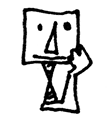
Acupuncture is one of the principal methods of treatment in traditional Chinese medicine. Acupuncturist Izabela Miętka talks about how knowledge from China can aid those living in the West.
Even a single needle can help restore balance to the body—on a physical, emotional, and spiritual level. A seemingly simple puncture contains all the knowledge about the complex network of connections that constitutes the human being.
Agnieszka Rostkowska: Acupuncture is an Eastern healing technique that has been used for over two millennia. How does it fare in relation to the latest scientific research and Western medicine?
Izabela Miętka: Acupuncture is mentioned as early as the fourth century, in the famous Inner Canon of the Yellow Emperor, still recognized today as the fundamental doctrine of traditional Chinese medicine (TCM). The book contains illustrations depicting the tools used before needles—instead of puncturing, particular points on the body were stimulated by way of acupressure, or compression. We still use the Inner Canon… and other classical works. They are translated and annotated—and can thus be understood today—by renowned sinologists, including Elisabeth Rochat de la Vallée, who interprets them, referring to their historical context. TCM is continually developing—today, we need to take into account everything that is going on in Western medicine, including new drugs and procedures, such as those related to improving fertility and the treatment of pain. We also take into account the particulars of different regions. For example, the inhabitants of Nepal live in unheated houses, so when I was there for an internship, I treated patients who were so cold, their tongues had turned purple. But at the same time, their inner peace and emotional balance is pretty much unheard of among people from Western European countries, who are mainly treated for the effects of stress.
Modern Chinese medicine is developing in the direction of complementary medicine,








